from network devices to screen system
Pi BPI-R4

A single-board device, which is positioned by the manufacturer as a system for designing network devices: routers, file servers, firewalls, etc. The board received an ARM Cortex-A73 processor and 4 GB of DDR4 memory, plus it has two 10 GbE Ethernet interfaces, 4 gigabit Ethernet ports, WiFi 7 support. There are also slots for SIM cards, there are three of them at once, as far as you can see.
As for the processor, it is MediaTek MT7988A which is also known as Filogic 880. This is a chip “sharpened” for work in network devices. It is compatible with WiFi 7. There is also an NPU (Network Processing Unit) neuromodule.
The manufacturer also provided 8 GB of internal memory, M.2 slots, where you can put either an SSD or wireless modules. There is a card reader, plus one 10 GbE Ethernet port and a 26-pin GPIO. The board size is 148 x 101 mm.
Sipeed Lichee Pi 4A
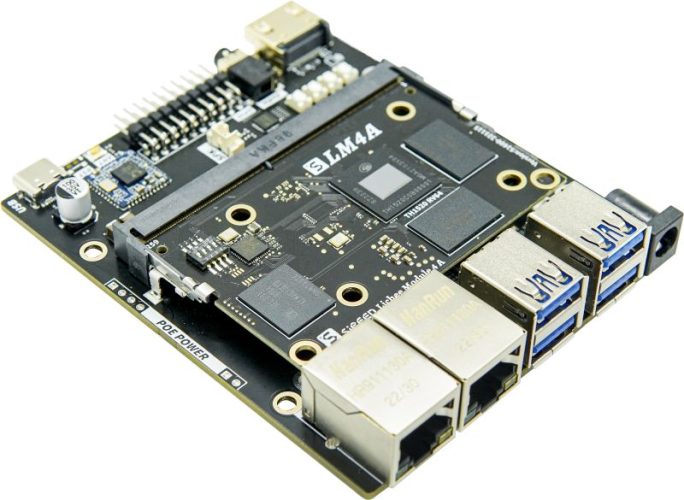
A small single-board device, about which the developers say that it is more productive than the Raspberry Pi 4. But in general, comparing these two devices is not very correct. First, the Lichee Pi 4A is powered by a RISC-V processor. Secondly, it supports up to 16 GB of RAM. Thirdly, this, in fact, is not quite a single-board device, since the device consists of two parts: a carrier board and a processor module, which also houses the RAM.

The cost of the device is $119 and up. The developer offers the following options:
- 8GB RAM + 8GB eMMC for $119
- 8GB RAM + 32GB eMMC for $135
- 16GB RAM + 128GB eMMC for $179
As for the processor, the Alibaba T-Head TH1520 processor is installed here. This is a 12nm chip with C910, C906, and E902 cores. As mentioned above, the module supports up to 16 GB of LPDDR4x-3733 memory and up to 128 GB of eMMC main memory.
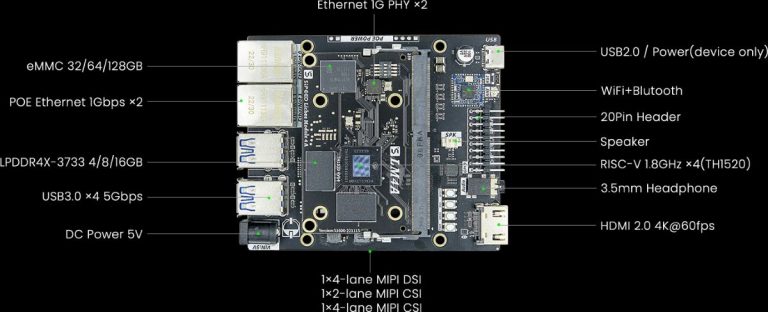
Additionally, you can purchase a camera, power supply, display with a resolution of 1280 x 800 and a diagonal of 10.1 inches. List of ports and connectors:
- 2 x Gigabit Ethernet ports (with PoE support)
- 4 x USB 3.0 Type-A (5 Gbps) ports)
- 1 x HDMI 2.0 (4K/60fps)
- 1 x 3.5mm audio
- 1 x 20-pin GPIO
- 1 x USB 2.0 Type-C (power only)
- 1 x microSD card reader
- 1 x 5V/2A DC
The system works with Debian, Android and OpenWRT.
MangoPi
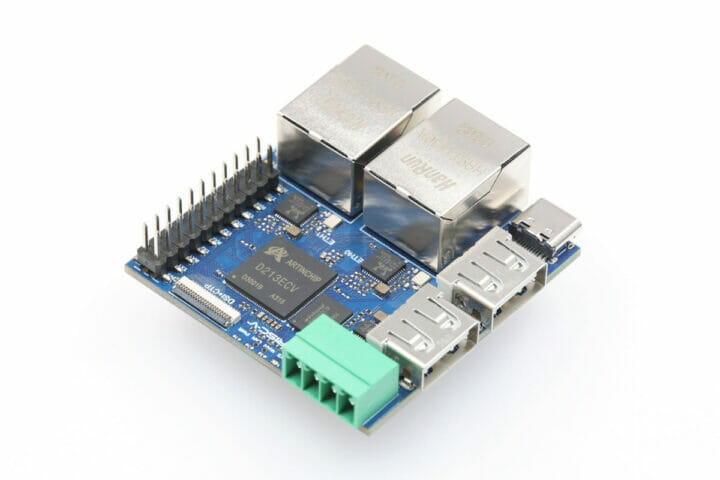
The developers of MangoPi have created a very small board for building routers. Its main feature is the RISC-V chip, most of these boards are equipped with chips with the RISC-V architecture.
The novelty carries on board a 64-bit ArtInChip D213ECV RISC-V (RV64IMAFDC) processor. The amount of RAM DDR3 with a frequency of 672 MHz is 128 MB. List of ports and connectors:
• SoC – ArtInChip D213ECV 64-bit RISC-V (RV64IMAFDC)
• RAM – 128MB 16-bit DDR3 @ 672 MHz (SiP)
• Main solder – 256MB (2Gbit) SPI NAND flash (Winbond 25N02KVZEIR), microSD
• Networking – 2x Gigabit Ethernet RJ45 ports via Realtek RTL8211F
• Display – FPC connector for MIPI DSI
• USB – 2x USB 2.0 ports
• CAN 2.0 interfaces
• 22-pin header with GPIOs, UART, SPI, ADC, 5V, 3.3V, and GND
• Size — 50*50 mm.
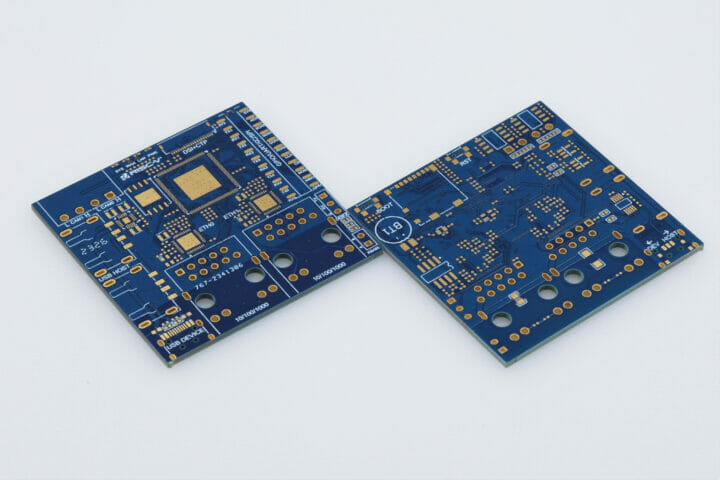
The novelty supports work with OpenWrt.
Orange Pi Zero 3
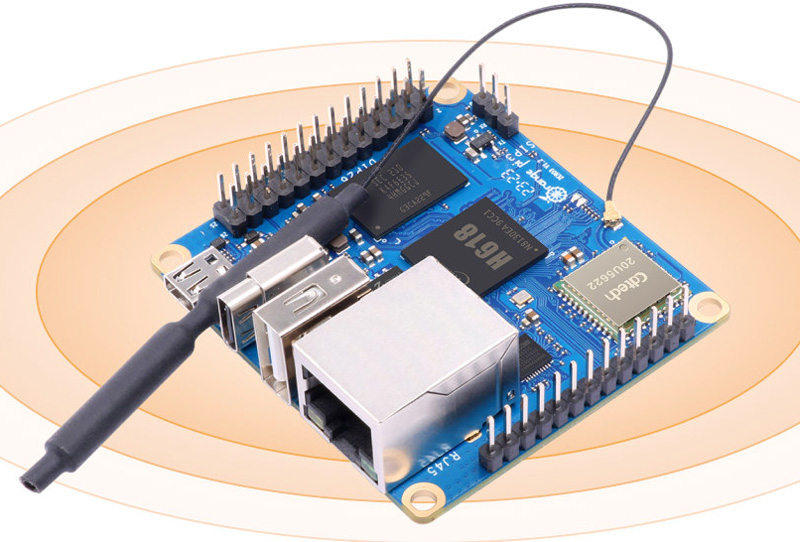
And one more single board developed by the Orange Pi team. This is a tiny single board with dimensions of 55 × 50 mm. It costs $15 to $25 depending on the amount of RAM. The board received an Allwinner H618 processor with four Arm Cortex-A53 cores (up to 1.5 GHz) and an Arm Mali-G31 MP2 graphics unit with support for OpenGL ES 1.0/2.0/3.2, OpenCL 2.0, Vulkan 1.1. The amount of LPDDR4 RAM varies, it is 1, 1.5, 2 or 4 GB.
In addition, the board is equipped with 16 MB SPI Flash and a microSD card slot. There are Bluetooth 5.0 and Wi-Fi 5 (2.4/5 GHz) adapters with an external antenna, as well as a 1GbE adapter (YT8531C). The developers also installed a 26-pin GPIO header (I2C, SPI, UART), as well as a 13-pin GPIO header (2 × USB 2.0, TV-out, infrared receiver).
There’s also Micro-HDMI 2.0 with support for 4Kp60 output. In terms of ports and connectors, RJ-45, a USB Type-C port for power supply (5V), and a USB 2.0 Type-A port are available.
You may also be interested in these texts:
→ June digest of new server hardware
→ Design process when designing complex products: what cannot be done without, and what can be excluded
→ Shawarma as a service: how to create a bot for ordering shawarma and leave only 1.1% of colleagues hungry





